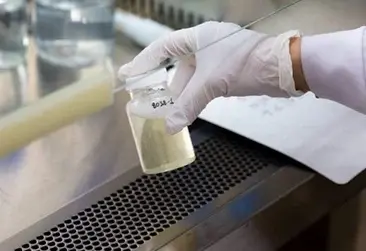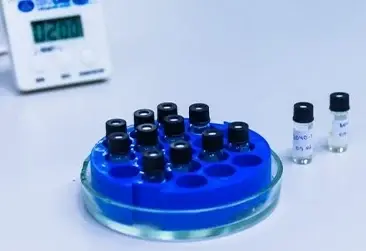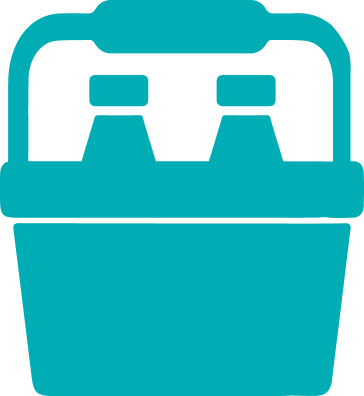Stormwater & Runoff Testing Services
Stormwater and surface runoff are dynamic, often unpredictable water sources influenced by weather events, seasonal changes, and a variety of human activities. Unlike process-controlled wastewater streams, stormwater flows across diverse landscapes—urban streets, agricultural fields, industrial lots—collecting contaminants as it travels.
"*" indicates required fields
Why Test Stormwater and Runoff?
Stormwater and runoff represent a critical environmental nexus: they link terrestrial activities with aquatic ecosystems, transferring pollutants from land to local waterways. Unchecked, these contaminants—ranging from sediment and nutrients to heavy metals and hydrocarbons—can degrade water quality, harm aquatic habitats, and pose health risks. By regularly testing stormwater and runoff, you can:
Strengthen Permit Compliance
Municipal Separate Storm Sewer System (MS4) permits, construction stormwater permits, and industrial stormwater permits often require systematic monitoring. Reliable test data helps ensure that your operations align with regulatory benchmarks.
Reduce Environmental Impact
Targeted analysis supports the development of effective stormwater management plans. This includes optimizing Best Management Practices (BMPs) to mitigate pollutant loading, prevent eutrophication, and limit sedimentation.
Support Sustainable Development
Informed decision-making guides the design of green infrastructure—such as bioswales, rain gardens, and permeable pavements—that enhances infiltration, reduces runoff, and protects downstream ecosystems.
Anticipate Climate-Related Pressures
As climate change intensifies rainfall patterns and extreme weather events, stormwater systems face new challenges. Strategic testing provides a baseline for adapting infrastructure and policies to shifting hydrological regimes.
Advanced Analytical Approach

Integrated Pollutant Profiling
We assess a spectrum of parameters—turbidity, total suspended solids (TSS), nutrients..
Read More
Read More
Read Less..

High-Frequency Sampling & Automated Collection
Rainfall is episodic and pollutant loads can spike during storm events. We help implement..
Read More
Read More
Read Less..

Source Tracking & Forensics
Using advanced chemical markers, isotope analysis, and microbial source tracking, we can..
Read More
Read More
Read Less..

Quality Assurance & Expert Interpretation
Our lab adheres to stringent quality control protocols and uses state-of-the-art instrumentation. Beyond..
Read More
Read More
Read Less..
Supporting a Range of Stakeholders

Municipalities & Stormwater Utilities
Meet NPDES (National Pollutant Discharge Elimination System) requirements, inform stormwater master plans
Read More
Read More
Read Less..

Construction & Development Firms
Validate that sediment and erosion control measures are working as intended, protect local waterways from sediment
Read More
Read More
Read Less..

Industrial & Commercial Facilities
Identify pollutant hotspots on your property, reduce runoff contamination through targeted BMPs, and
Read More
Read More
Read Less..

Agricultural Land Managers
Optimize nutrient management strategies, safeguard drinking water supplies, and protect downstream fisheries and
Read More
Read More
Read Less..

Environmental Consultants & Non-Profits
Generate robust datasets that inform environmental impact assessments, restoration
Read More
Read More
Read Less..
Proactive Solutions for Changing Conditions

Adaptive Management
By continuously monitoring runoff quality, you can evaluate the effectiveness of implemented BMPs, refine stormwater infrastructure..
Read More
Read More
Read Less..

GIS Integration & Spatial Analysis
Combining lab results with geospatial data provides a clearer picture of watershed-level dynamics. This holistic view helps prioritize catchments..
Read More
Read More
Read Less..

Climate Readiness
With long-term datasets, you gain the ability to detect trends, forecast flood risks, and strategize for future conditions. Testing results feed into..
Read More
Read More
Read Less..
Partner With PITS Environmental
Choosing PITS Environmental for your stormwater and runoff testing means collaborating with a team that understands the unique complexity of these water sources. We provide actionable data, interpretive expertise, and forward-looking recommendations that not only help you meet today’s standards but also anticipate tomorrow’s challenges. Whether you’re managing a large urban watershed or a small construction site, our approach is rooted in scientific rigor, environmental stewardship, and responsive client support.
Expert Insights on Testing Methods

ICP-MS (Inductively Coupled Plasma Mass Spectrometry) for detecting trace metals with precision.

Microbiological Testing for identifying pathogens like E. coli and Legionella.

Ion Chromatography for measuring ions like nitrates and sulfates.
Reliable Water and Air Quality Testing Services
Protect your environment with our specialized water and air quality testing solutions, offering comprehensive analysis to detect contaminants, convenient sample collection, and on-site testing for immediate results. Contact us today to schedule a consultation or on-site visit and take the first step toward a healthier, safer environment!
Frequently Asked Questions
How often should stormwater or runoff be tested?
Testing frequency depends on regulatory permit conditions, the sensitivity of the receiving environment, and seasonal precipitation patterns. Often, sampling is required during specific storm events and seasons to capture representative water quality data under varying conditions.
Can you help identify the source of contaminants in runoff?
Yes. Through techniques like microbial source tracking and detailed chemical fingerprinting, we can help distinguish between pollution arising from industrial activity, vehicle emissions, landscape fertilizers, septic systems, and other sources.
What if my facility isn’t currently meeting stormwater quality standards?
Our team offers more than test results. We’ll help you interpret the data, recommend targeted BMPs or infrastructure improvements, and consult on strategies that can bring your runoff quality into compliance.
Are there emerging contaminants of concern in stormwater?
Emerging contaminants such as microplastics, PFAS compounds, and tire-derived chemicals are increasingly being monitored in stormwater. We stay updated on cutting-edge methods to detect these pollutants and help you prepare for future regulatory thresholds.
How do green infrastructure solutions relate to testing results?
By comparing water quality data before and after implementing green infrastructure—like rain gardens or vegetated swales—you can gauge their effectiveness. This data-driven feedback loop allows for iterative improvements, ensuring that your investments yield measurable environmental benefits.
Request a Test or Consultation
Your Environment, Our Priority – Fill out the form below, and our team will get back to you as soon as possible.
"*" indicates required fields





